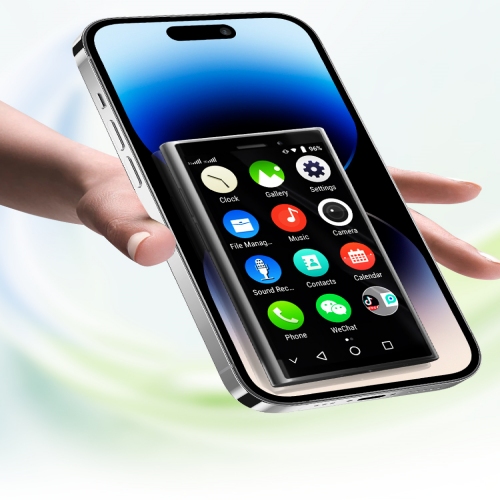For a lot of travelers, the first real shock in China isn’t the skyscrapers or the food but when they try to get online. Imagine arriving at Pudong Airport, pulling your suitcase through the throngs, and pulling out your phone only to discover nothing works. The free Wi-Fi blinks out a login page, but it requires a local number you don’t have. Now is when the quest for the best sim card for china travel takes on an urgent aspect. But without it calling a Didi, checking the train schedule or buying snacks is more challenging than you would like. The right SIM doesn't just save you a little money — it makes the difference between your first few hours in China running smoothly or becoming an aggravating mess of confusion.
Choosing the Best SIM Card for China Travel
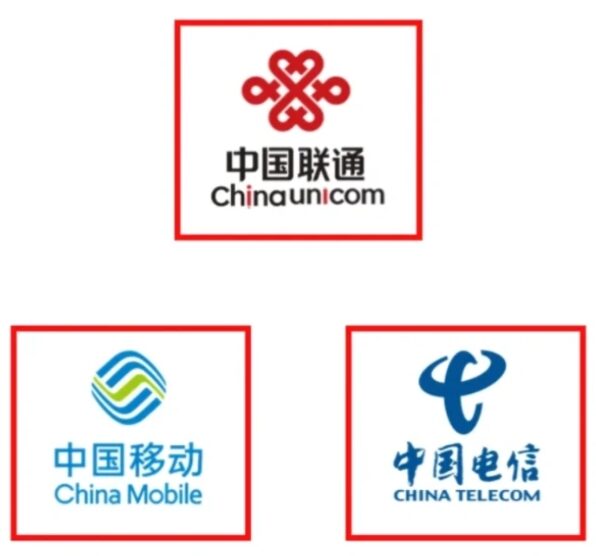
Three Carriers
China's Big Three Carriers: Buying a Local SIM Card
When tourists discuss SIM card for China travel, they mean usually to get one of these sim cards: China Mobile, China Unicom and China Telecom. Those carriers dominate the market, and coverage ranges from Shanghai’s skyline to Guangxi’s rice terraces. China Mobile is popular for its strong coverage in large cities, while China Unicom works well on high-speed trains. All three have robust 5G networks, so if you’re toting a recent iPhone or Samsung device, streaming and navigating are no problem.
Another advantage is flexibility. Short-stay on prepaid packages usually around ¥100–¥150 for 20GB (students and other long-term visitors get better deals, with monthly bundles). The best part, of course, is the reliability — I’ve never found a dead zone in rural smalltown America when roaming on this service like you might expect as you roam with on your home provider. It even appears in places like remote Yunnan villages or Tibetan mountain towns, at least 3G if not 4G.
Still, there are hurdles. Since 2013, travelers must have “real-name registration,” so you’ll need to show your passport here. Registration is fast at the main airports, such as Beijing Capital and Shanghai Pudong, but smaller branches may have language problems. I was asked for a photo ID once, which felt odd as I wasn’t prepared for it. International roaming is also restricted, and pricing in-person in local branches might be lower but often only explained in Chinese, so many head to the airport for peace of mind.
Worried about staying online during your China trip? Discover Will My Phone Work in China? 2025 Guide to SIM, Apps, and Connectivity
Hong Kong Roaming SIMs: Getting a Registration-Free Option
Carriers including SmarTone and China Mobile Hong Kong sell roaming SIMs that are compatible across mainland China. The allure is convenience: no passport registration, no long lines, no paperwork. I ordered one in advance from Amazon once and it saved so much time. You simply turn it on when you arrive. Many of these cards also allow you to use Google, Instagram and YouTube without a VPN, which is good news for travelers who rely on Western apps.
This is where that convenience pays off for short-term trips. I got off the plane at Shanghai Pudong, swiped my card and was instantly on my way to my hotel while texting my first WhatsApp message home. This “plug-and-play” setup is a hit among tourists who prefer Google Maps or social media. If you’re the kind of person who is spending just a week in China, it does save you a lot of trouble. It’s definitely a contender for best SIM card for China travel.
However, the trade-offs are real. Speeds can lag when you get out of big hubs like Beijing or Shanghai, particularly in small towns. Many cards also come with fixed bundles, shelling out something like 5GB for 7 days, and topping up from outside Hong Kong can be messy. Reviews are mixed: Some reviewers love its easy setup, while others complain of dropped video calls. These are obviously SIMs for light occasional use, not heavy streaming or work calls.
eSIMs: Opting for the Easiest Digital Activation Method
An eSIM is a digital profile already on your phone — no plastic card required. Prepurchase one on a platform like Airalo, Nomad or Holafly, scan a QR code and you’ll be online as soon as your plane touches down. Many eSIM plans push your data connection “abroad”. This means you don’t even have to switch over to a VPN for Gmail, Google Maps, Instagram and so on working immediately in mainland China. For gadget-savvy travelers, that’s huge. This is one of the best SIM cards for China travel if you are comfortable handling your digital services.
Dual-use is another perk. While having eSIM on for data, you can still keep your home SIM active for bank transactions or if someone calls you. This works great if you need to pick up a verification code at the same time from ordering food on Alipay or booking a Didi ride in Chengdu. It is a smooth way of handling the personal and travel communication without two phones.
But eSIMs aren’t for everyone. They’re not available on all devices; safe bets are the iPhone XR and newer, as well as high-end Samsung phones. Prices tend to be higher than what you can find with a local SIM, and short-term plans often come at a high per-gigabyte cost. And many providers offer data plans without voice minutes. And if the activation process doesn’t go through, refunds can happen at a glacial pace. That’s what makes eSIMs ideal for frequent travelers who are happy to take a little tech risk.
Need more hands-on advice on eSIM setup and usage? Read China eSIM Guide 2025: 7 Tested Travel Plans and Setup Tips That Actually Work and travel worry-free.
Alipay/WeChat Mini-Programs: Using Local Apps to Apply Online
Visitors can now apply for SIM packages through China’s super apps Alipay and WeChat inside their mini-programs. You upload your passport photo, select a plan and pay by card. In minutes, you receive confirmation and instructions to collect the SIM at an airport kiosk or have the card delivered to your hotel. For people who are already using these apps for payments, it’s simple and familiar.”
Some plans even include local data as well as a few international call minutes. That comes in handy if you want to check hotel reservations or call your airline without being reliant on Wi-Fi. It's well-suited for tourists who enjoy managing logistics on their phone but want to avoid standing in line at a carrier store. It is one of the strongest contestants for the best SIM card for China travel if you already know how to use these apps.
But there are limits. These mini-programs are not available everywhere, especially in smaller cities and rural areas outside hot spots like Beijing, Shanghai and Guangzhou. Its interface may only be in Chinese, meaning you can auto-translate the rest. Refunds and help can also be shakier than what’s provided in physical stores. If they are centralized on an app you’re already using, it’s convenient for existing travelers — Alipay and WeChat work fine for me, but first-timers often find them confusing.
Where to Get a SIM Card for China Travel
Buying in China
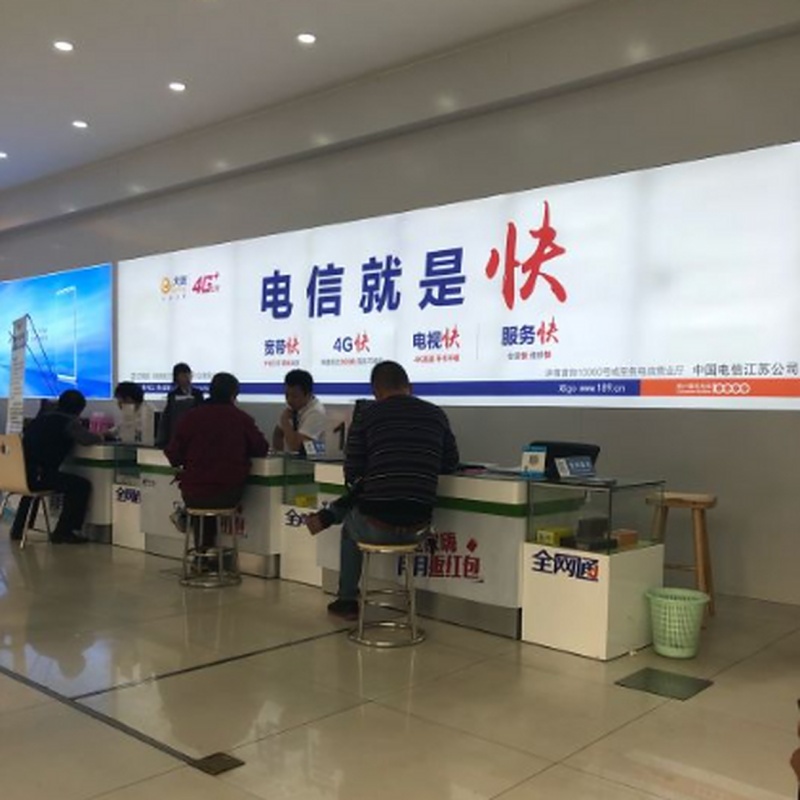
China Telecom
Most travelers still choose to buy their SIM cards after landing in China. At both Shanghai Pudong and Beijing Capital Airport, you'll see telecom counters right after customs. They stay open late, which is helpful if you're on a long flight. Prices at these airport counters are higher, but you'll get English-speaking service and a smooth setup.
In city centers, official telecom stores like China Unicom on Nanjing Road in Shanghai or China Mobile branches in Beijing offer cheaper monthly or prepaid plans. These stores give you more data for less money, but you might face longer lines and staff who don't speak English. Another option is convenience stores like 7-Eleven or FamilyMart, where you might find prepaid cards for short trips. However, their stock is inconsistent, and not all of them sell to foreigners.
For first-time visitors, the airport is the safest bet for getting the best SIM card for China travel. More experienced travelers who speak some Chinese often head into the city for better deals.
Table: Buying in China
| ChannelWhat You Get | |
|---|---|
| Airport counters (Pudong/Capital Airport) | Quick setup, English-speaking staff, tourist-friendly packages (¥100–¥150 for 20GB), but prices are 20–30% higher than in the city. |
| City telecom stores (China Mobile, China Unicom, China Telecom) | More plan choices, lower cost per GB (often ¥60–¥80 for 20GB), but expect longer queues and staff who may not speak English. |
| Convenience stores (7-Eleven, FamilyMart) | Occasional prepaid SIMs for short stays, easy to buy on the spot, but stock is unreliable and some cards require local ID. |
Buying Before Arrival
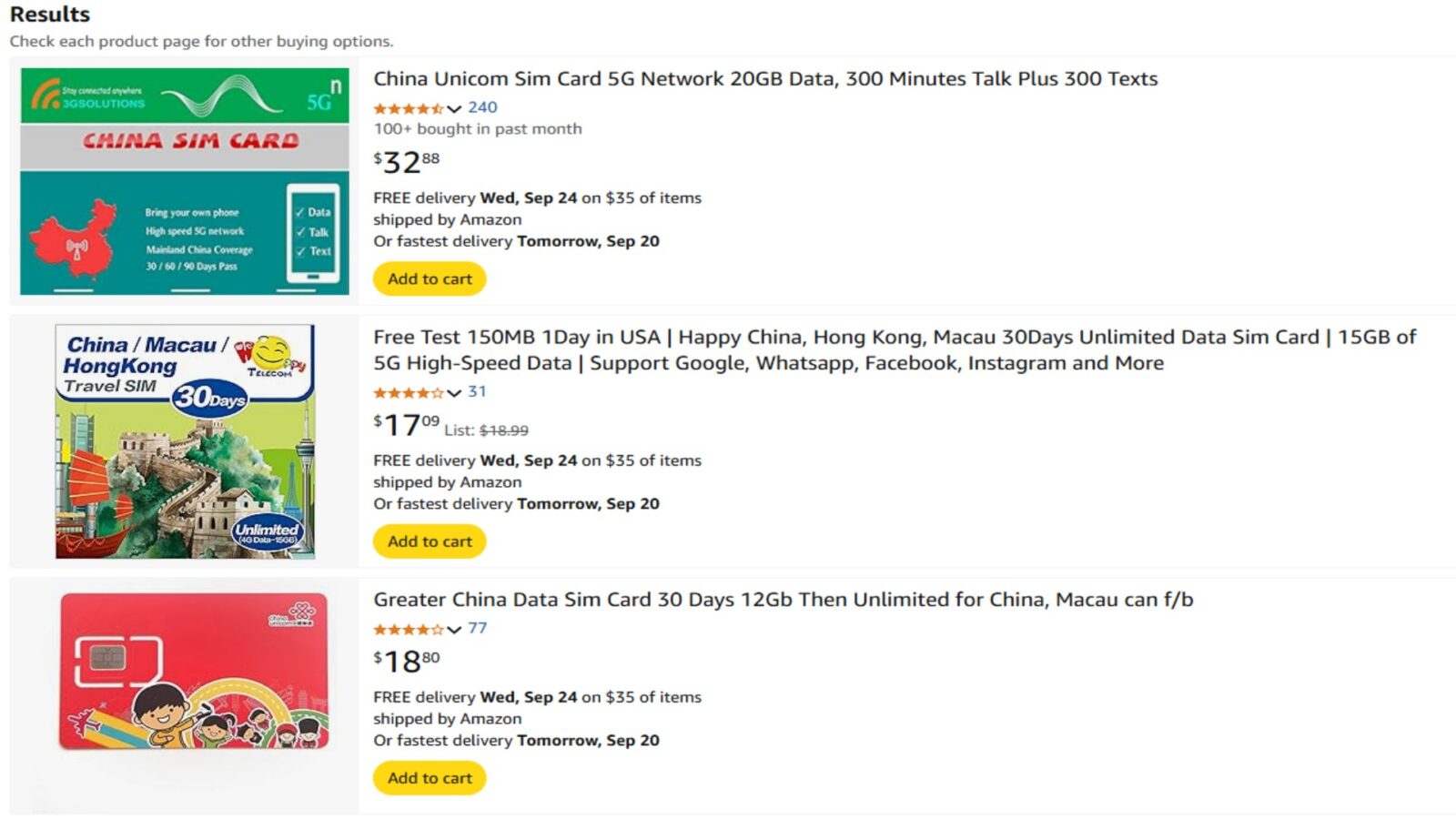
Amazon
If you like to be prepared before heading for the plane, you can set up a SIM or eSIM in advance of traveling. Platforms like Trip. com and Klook enable you to pre-order a SIM online and collect it at Chinese airports. This is a little pricier, but you avoid language problems and guarantee getting connected immediately.
If you would like a physical card, you can buy Hong Kong–based roaming SIMs from Amazon and eBay that are also valid in mainland China. Those are steady for some casual uses and when you don't want to through a VPN whenever you want to use Google or Instagram or WhatsApp etc. For easy set-up though, it’s easier to be an eSIM-provider such as Airalo, Holafly or Nomad. You simply scan a QR code and your phone connects as soon as the plane lands — no swapping cards or queueing up at a counter. This is particularly handy for quickies when time and ease are of the essence.
Table: Buying Abroad
| ChannelWhat You Get | |
| CTrip / Klook pre-order | Reserve online, guaranteed pickup at major Chinese airports, clear tourist data packages, slightly pricier than buying in the city. |
| Amazon / eBay | Hong Kong/China roaming SIMs shipped to your home, plug-and-play on arrival, but watch out for counterfeit sellers or outdated stock. |
| eSIM platforms (Airalo, Holafly, Nomad) | Instant digital setup with QR code, works on supported phones, allows access to Western apps, but costs more and no voice minutes. |
Avoid Using China Broadnet SIM Cards
China Broadnet has recently entered the mobile market as a “fourth carrier,” but it’s not suitable for foreign travelers. Its coverage is still patchy compared with China Mobile, Unicom, and Telecom, relying heavily on roaming agreements. Outside major cities, you may encounter weak signals, slower speeds, or even no service at all. For visitors planning to explore rural towns, cultural sites, or mountain areas, this lack of reliability can quickly turn into frustration.
Another problem is that Broadnet lacks tourist-friendly services. Airport counters rarely sell its SIMs, and city stores may not know how to process passports or assist English speakers. Most plans are designed for locals, with apps and support only in Chinese. On top of that, international roaming and prepaid options are limited. For these reasons, foreign travelers are strongly advised to avoid Broadnet and instead choose China Mobile, China Unicom, or China Telecom for steady coverage and easier setup.
Overcoming Network Restrictions
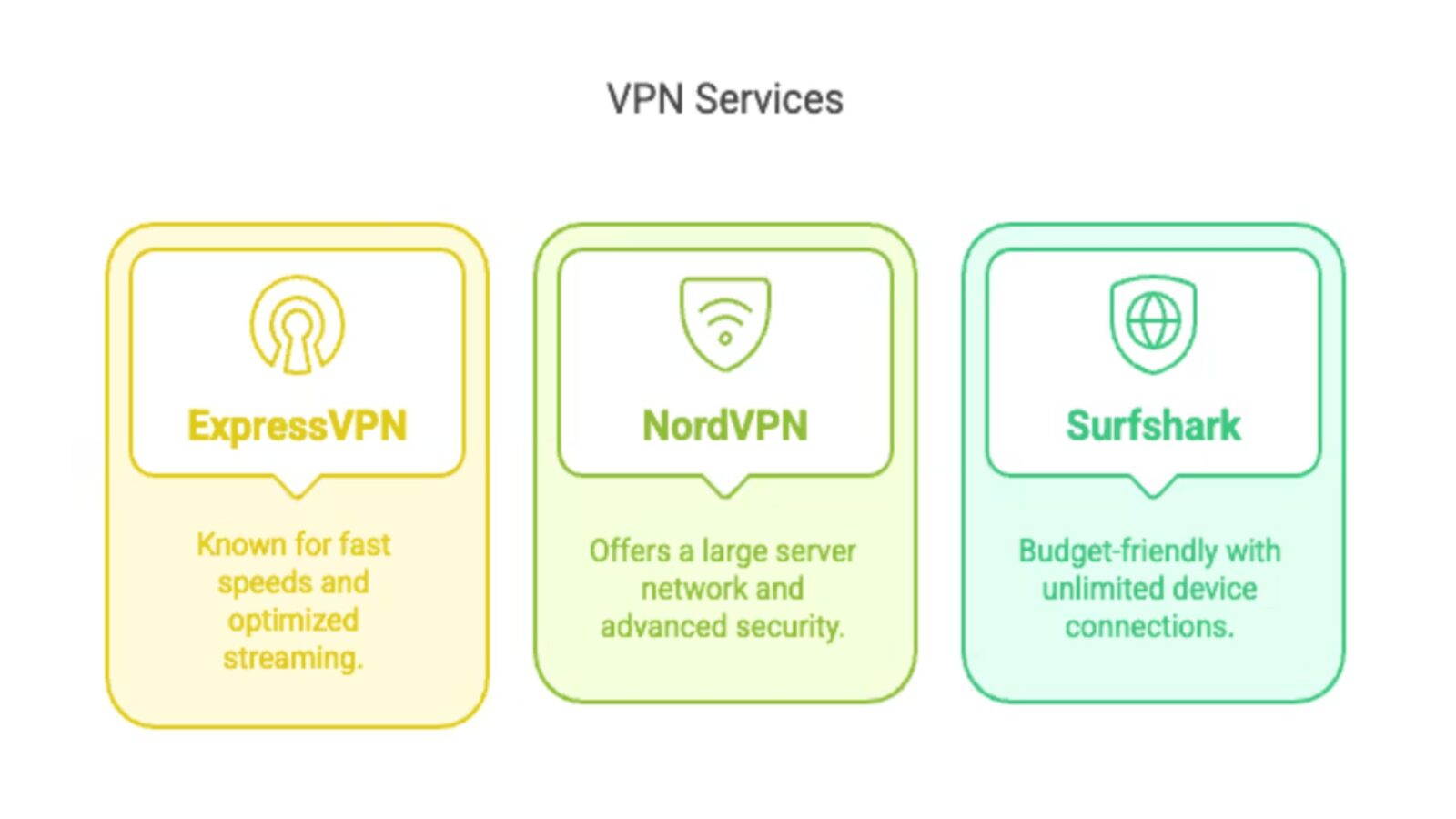
VPN Services
Why You Need a VPN in China
Google, Instagram, WhatsApp — nothing works on a regular Chinese SIM card due to the Great Firewall. eSIMs such as Roamless sometimes squeak through when they route data out of the country, but not always. The only reliable way to stay connected is a VPN, and here’s the rub: You have to download and set it up before entering China, because many VPN apps are blocked from local app stores when you’re in the country.
Recommended VPNs for Travelers
If you’re visiting China and want reliable access, here are three VPNs that have a good track record:
- ExpressVPN – Known for its speed and ease of use, it works on mobile and laptop, and its apps are simple enough that even non-techies can connect in seconds.
- NordVPN – Popular for strong security features, plus it has a wide server network, so you can switch if one gets blocked.
- Surfshark – A budget-friendly option that allows unlimited devices, which is handy if you’re traveling as a couple or group.
Want local tips that only the right apps can give? Discover China Travel Apps Guide 2025: Essential Tools for Payment, Transport & Local Tips
Mastering SIM Card Installation and Top-Ups
Setting Up a SIM Card
Before you buy any SIM or eSIM in China, make sure your phone is unlocked and supports Bands 3, 8, 20, or 38, since these are the main frequencies used. Installing a physical SIM is straightforward—just insert the card—while eSIM users only need to scan a QR code for activation, which usually takes a few minutes. Always double-check device compatibility before your trip to avoid surprises at the airport counter.
Topping Up a SIM Card
The real challenge for many tourists is recharging their SIM. Most local cards require Alipay or WeChat Pay linked to a Chinese bank account, something short-term visitors often lack. To get around this, many travelers buy scratch-card vouchers sold at kiosks and convenience stores, which allow you to enter a code and add data or minutes without needing local payment tools. This option is reliable, especially for those staying a few weeks.
Things to Keep in Mind
Using mobile data in China can get expensive if you don’t manage it carefully. Always connect to Wi-Fi in hotels, cafés, or airports whenever possible, and turn off background refresh for apps like TikTok or Maps. Lowering video resolution to 480p on YouTube or Bilibili also helps stretch your data. For longer stays, consider monthly city plans instead of pricier airport tourist packages, and if you want to keep things simple, bring a second cheap phone just for your Chinese SIM to avoid mixing work or banking data.
Pro Tip
For most tourists, the easiest formula is: start with a small prepaid plan, use Wi-Fi whenever it’s stable, and rely on scratch-card vouchers for top-ups. This way you stay connected without overspending, while keeping enough flexibility for unexpected travel needs.
FAQs: Answering First-Time Visitors' Questions
Q: Do I really need a SIM card in China if hotels have Wi-Fi?
Wi-Fi is indeed common in hotels, cafés, and even some public areas, but most networks demand SMS verification codes to log in, which foreign numbers can’t receive. That means you might connect one moment and get kicked off the next when the system asks you to verify. Travelers often end up standing in hotel lobbies begging reception for a temporary code. Having a local SIM avoids all this, giving you stable access for maps, payments, and ride-hailing apps, so it feels less like a gamble and more like a guarantee. Finding the best SIM card for China travel means avoiding these frustrating situations.
Q: Which carrier offers the widest coverage?
China Mobile offers the broadest coverage, even in rural areas. However, some imported phones may have compatibility issues. China Unicom has slightly less coverage, but it works better with foreign phones. It also provides reliable 4G and 5G speeds on high-speed trains. Many experienced travelers suggest Unicom for a good balance of reach and reliability. Some long-term expats even use a China Mobile line as a backup for trips.
Q: Can tourists buy SIM cards at airports?
Yes, kiosks at airports like Beijing Capital, Shanghai Pudong, or Guangzhou Baiyun are well-stocked with tourist packages. They stay open until late flights arrive, and staff are used to helping foreigners. The downside is cost: airport prices are typically 20–30% higher than city branches. Some visitors pay the premium for peace of mind after a long-haul flight, while budget-conscious travelers head into town for better deals, accepting the longer queues and language challenges.
Q: Are eSIMs like Nomad reliable in China?
Travelers report that Nomad and similar providers usually connect smoothly upon landing, with activation taking only a few minutes. The big perk is that many eSIMs route traffic through overseas servers, so Google Maps and Gmail load right away. That said, speeds can dip during peak evening hours, and server rerouting sometimes makes video calls choppy. For short stays or for those who need easy setup without paperwork, eSIMs are a strong option, though not always as fast as a local SIM.
Q: Do I need a VPN if I only want WeChat and Alipay?
No, both WeChat and Alipay run without issues on Chinese networks, and they remain the backbone for payments and messaging. But if you rely on Western services like WhatsApp, Instagram, or YouTube, you’ll be stuck without a VPN. Some eSIMs sneak past restrictions, though not consistently. So if your trip depends on Western platforms, download and test a VPN before entering China to avoid frustration.
Q: How much data for two weeks?
Most tourists get by with 6–10GB for a two-week trip, enough for daily navigation, social media, and light video use. But heavy streamers or those using translation apps constantly may burn through more. Reddit forums often suggest buying a mid-tier plan and topping up later, since adding a few extra gigabytes is easier than running out mid-journey. It’s better to err on the side of extra data than to find yourself offline when you need directions.
Q: Is a Hong Kong SIM cheaper?
Often yes, and they’re especially popular with travelers who also visit Macau or Hong Kong during the same trip. These SIMs frequently bypass censorship, letting you access Western apps without VPNs. However, once you move inland, connection speeds can feel sluggish and sometimes unstable. If your itinerary sticks to Shanghai, Shenzhen, or Guangzhou, a Hong Kong SIM can work fine, but for remote provinces, it might leave you frustrated.
Q: Can I top up with a foreign credit card?
Rarely. Most Chinese carriers require Alipay or WeChat Pay linked to a local bank account for online top-ups. Tourists often work around this by purchasing recharge vouchers in convenience stores or asking hotel staff to help. Another tip is to buy slightly more data upfront if you’re not sure about topping up later, which avoids the scramble of trying to add credit mid-trip without local payment tools.
Q: What ID is required?
Since 2013, real-name registration laws require a valid passport for all SIM purchases. At some stores, you may even be asked for a live photo or face scan, which can surprise first-time visitors. Airport kiosks streamline this process, but smaller shops may take longer if staff aren’t used to processing foreign IDs. Having your passport handy is essential, and don’t be shocked if the setup takes 10–15 minutes.
Q: Is 5G available?
Yes, 5G has rolled out in most major Chinese cities, and speeds are impressive—perfect for streaming or navigation. Just make sure your phone supports Chinese frequency bands, as not all imported models do. In smaller towns, you may fall back on 4G, which is still plenty fast. For those with newer devices, experiencing 5G in places like Shanghai or Shenzhen can be surprisingly smooth, showing just how advanced the networks here are.

